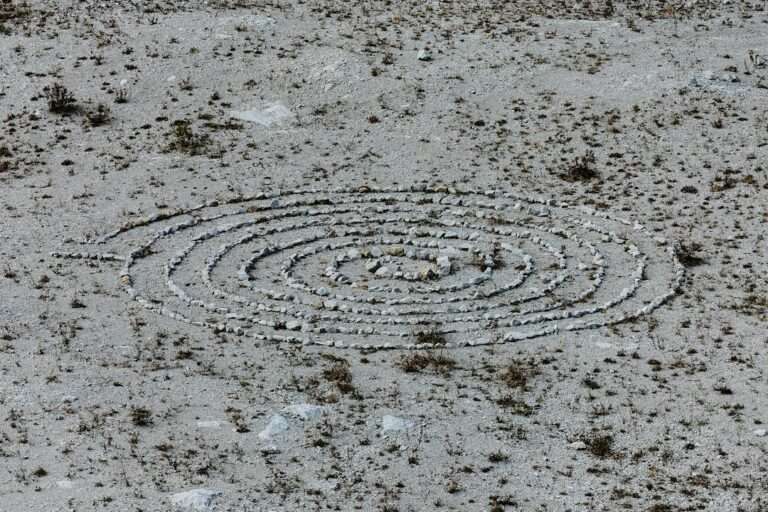Symbolism The Sun – Secret Meaning and Surprising Facts


Are you in awe of the magnificent sun, admiring its breathtaking beauty? Prepare to embark on an extraordinary exploration into the captivating realm of symbolism.
In this article, we delve into the power and significance of the sun symbol, unravelling the reasons behind its universal allure and uncovering its multifaceted meanings in diverse contexts. Let us venture forth and discover the inspiring depths of symbolism, where the radiant sun reigns supreme.
Welcome to an illuminating journey into “Symbolism The Sun” where we unlock the hidden secrets and reveal the surprising facts that lie within this celestial symbol.
What Does The Sun Symbolize Spiritually?
The sun has immense spiritual meaning. It symbolizes enlightenment, life, and divine power. It is associated with gods, strength, courage, and clear sight. In addition, it serves as a metaphor for transformation and progress. The spiritual symbolism of the sun goes beyond cultures and borders and brings a shared human experience. It stands for vitality, dispels darkness, and encourages us to reveal our inner light.
Sun and Moon Symbolism: The Differences and Similarities
The sun and moon are symbols of great significance in symbolism. Though they have some similarities, there are differences that set them apart. Let’s explore these celestial symbols in depth.
- Let’s look at their similarities:
- Sun: Represents light and warmth; symbolizes vitality and energy; often seen as masculine; source of life.
- Moon: Also represents light, but softer; symbolizes serenity and tranquility; often seen as feminine; linked to cycles of life.
- Now for the differences:
- Sun: Shines brightly during the day; represents conscious awareness and logical thinking; signifies action and motivation; connected to ambition and assertiveness.
- Moon: Radiates ethereal glow at night; embodies intuition and subconscious mind; reflects emotions and dreams; tied to introspection and reflection, spiritual awakening.
Interesting to note, various cultures associate specific attributes with the sun and moon symbolism. Ancient civilizations often revered the sun as a deity due to its life-giving energy. On the other hand, the moon is linked to feminine energy because of its connection to the menstrual cycle.
Understanding the nuances between these celestial symbols allows us to appreciate their impact on human philosophy, spirituality, and artistic expression. The contrasting qualities of the sun and moon offer a rich tapestry for interpretation by artists, writers, and dreamers. The illumination of the sun and the gentle radiance of the moon captivate us in unique ways and will continue to fascinate humanity.
What Does The Rising Sun Mean in Symbolism?
The rising sun symbolizes new beginnings, hope, and enlightenment. It’s a sign of a fresh start, bringing feelings of renewal and potential. In many cultures and beliefs, the sun is respected as a source of life.
This symbol sparks optimism and positivity. Its light pierces the darkness, awakening nature and bringing joy. The sunrise also stands for rebirth, inspiring people to take on new journeys.
For many traditions, the rising sun has spiritual meaning. It’s a sign of knowledge and self-discovery. Just like the dawn of each day, it reminds us to rise above challenges and pursue growth.
In ancient Egypt and Japan, the sun was highly valued. Horus, Egypt’s god of the sky, fought against chaos to bring order. Meanwhile, Japan’s national flag displays the sun as a symbol of imperial power.
The sunrise also appears in art and literature. J.M.W Turner captured its beauty in paintings, while Rumi used it in poetry as an image of hope despite hardship.
What Does Sunlight Symbolize?
Sunlight is a powerful symbol. It stands for life, vigor, and energy. The sun’s warm rays bring light to the darkness, lighting up our surroundings and giving us warmth. This symbolism is closely connected to the sun’s huge role in our lives.
Sunlight also means enlightenment and knowledge. As the sun casts away the darkness, it can illuminate our minds and increase our understanding. Sunlight is associated with clarity and wisdom, as it can bring forth fresh views and show hidden truths.
Sunlight is a source of hope and cheerfulness. It brings delight and joy, reminding us that even in tough times, a new day with chances lies ahead. The sun’s radiance can cheer us up, making us positive and inspiring us to be optimistic.
In addition, sunlight has spiritual meaning for many cultures. In old civilizations, the sun was worshipped as a god because of its life-giving properties. Its rays were thought to have healing powers, spiritually and physically. Even today, sunlight is an important part of many religious ceremonies and rituals.
Overall, sunlight symbolizes more than just physical light. It represents life, enlightenment, hope, and spirituality. Its warmness reminds us of the beauty of life and encourages us to appreciate the wonderful gifts given by nature’s strongest energy source – the sun.
Symbolism of the Sun in Ancient Mythology
The Sun has had deep symbolism in old myths. It stands for power, energy, and life cycle. Many cultures view it as a deity or celestial being that gives light and heat to the world. Fire often symbolizes transformation and reformation with the Sun. It is also related to growth and fertility since its beams provide essential energy for plants to grow. The Sun is seen as a source of knowledge, guiding us on our journey. Mythology showcases the universal respect for this celestial body over the years.
In Egyptian mythology, the Sun god Ra was thought to be the creator of all living things. He was usually shown with a falcon head and a solar disc. Ra’s daily trip across the sky was seen as life’s cyclical nature and the renewal of things. Norse mythology had Sól, the Sun goddess, who drove the chariot carrying her through the sky. Her brilliance brought light to gods and people alike.
Hindu mythology had Surya, the Sun god, as one of the Adityas (celestial deities). He was respected as a light source and also a symbol of truth and justice. Surya’s chariot ride through the heavens marked the passing of time and showed the importance of cosmic balance.
Native American tribes also had their Sun gods. The Apache people worshipped Jóhonaa’éí (Sun Father). He gave warmth during winter and ensured plentiful harvests during summer. For many Pueblo tribes, Tawa Kachina (Sun Spirit) was greatly appreciated. He was a powerful life force and blessed their communities.
The Sun has more symbolism in old mythology than its physical traits. It stands for life, creation, and knowledge. By studying these mythological beliefs, we gain insight into the Sun’s cultural meaning over the years. Its symbolism still resonates today, reminding us of the connection between light, life, and the divine.
Spiritual Meaning of the Sun Symbol
The sun symbol has a deep spiritual meaning all over the world. It stands for power, life and enlightenment. Different religions see it as a source of divinity, renewal and protection. It reminds us of our own inner power.
In ancient Egyptian belief, Ra was the creator of life and the sun was his physical form. Native Americans saw sunlight as a way to cleanse the mind and spirit. Other cultures link particular qualities to different parts of the sun’s journey.
This symbol speaks to something beyond scientific understanding. It may be a divine force or a reminder of our own inner light. We should appreciate its beauty and wonder. The sun stands for guidance and nurturing since time immemorial.
Interpretation of the Sun Symbol in Art
The sun symbol holds deep meaning and significance in art. Throughout history, artists have used it to express various concepts and emotions.
To understand its interpretation, we must consider its representation in different cultures and civilizations. It is seen as a universal symbol of life, energy, and vitality. Its brightness often stands for warmth, light, and hope.
Let’s look at a table that shows some examples:
| Symbolic Meaning | Culture/Artistic Movement | Examples |
|---|---|---|
| Life | Ancient Egyptians | The sun disc with wings symbolizing rebirth and creation |
| Power | Aztecs | Huitzilopochtli, the Aztec sun god with strength |
| Enlightenment | Renaissance | Paintings featuring halos around religious figures |
Artists also give the sun symbol personal meanings related to their experiences or ideas. This makes each artwork with this symbol unique and thought-provoking.
The power of the sun symbol lies in its capacity to stir emotions and stimulate contemplation. Whether used as a metaphor for life’s cycles or as a divine power representation, it continues to captivate viewers with its timeless charm.
Exploring different artistic movements and cultural backgrounds, we realize the sun symbol has not one, but many interpretations. Its multifaceted nature allows infinite possibilities for artistic expression.
The Symbolism of the Sun in Different Cultures
The Sun has various symbols in many cultures. Let’s look at the varied meanings of this celestial body.
We’ll start with the symbols related to the Sun. Check this out:
| Culture | Symbolic Meaning |
|---|---|
| Ancient Egyptian | Life, power, and rebirth |
| Native American | Healing, warmth, and growth |
| Japanese | Divinity and prosperity |
| Aztec | Creation and fertility |
In Ancient Egyptian culture, they respected the sun god Ra for life, power, and rebirth. Meanwhile, Native Americans believed the Sun was a sign of healing, warmth, and growth.
In Japan, the Sun stands for divinity and prosperity. It is especially important during Hinamatsuri and Obon festivals.
The Aztecs thought the gods gave themselves to create the Sun. They saw it as a symbol of fertility and creation.
In conclusion, the Sun carries different meanings in various cultures. But it all links to energy, power, and spirituality. By considering these interpretations, we can understand our relationship with nature and old beliefs better.
Symbolic Significance of the Sun in Religion
The sun is a symbol of great importance to many religions. It represents divinity, power, and enlightenment. Ancient Egyptians worshipped the sun god Ra as the king of the universe. Hindus revere Surya as the source of life and energy. The sun’s light and warmth are believed to bring spiritual illumination. It plays a part in many religious rituals and symbols.
Religion and solar events are connected. Festivals and ceremonies are timed with solstices and equinoxes. Christmas falls on December 25th, which is the winter solstice in many places.
The sun also stands for inner enlightenment and wisdom. Its brilliance is a metaphor for self-awakening. Buddhists try to reach enlightenment by cultivating awareness and wisdom, likened to the sun rising.
The sun is a symbol of divine power in various religions. It is a reminder of divinity and a guide on the path to transcendence. Let the sun’s radiance guide us as we explore the meaning of life.
Astrological Meaning of the Sun Symbol
The sun symbol has great significance in astrology. It stands for power, strength, and life force. It directs us, giving us warmth and energy. It encourages creativity, ambition, and self-expression. Its rays remind us to shine. It’s at the center of astrology, symbolizing our core essence and identity.
When looking at a birth chart, the sun symbol reveals our ego, character, and sense of self. People with a strong sun sign have confidence, charm, and leadership skills. They attract others easily.
Each zodiac sign has its own energy from the sun. Aries is passionate and determined. Leos are outgoing and love attention. The sun symbol plays a big role in astrology.
Esoteric Interpretation of the Sun Symbolism
Exploring sun symbolism from an esoteric perspective reveals a world of hidden meanings. It is seen as a metaphor for spiritual awakening and divine energy. Ancient cultures believed it holds immense cosmic energy to connect us to our higher selves.
The sun symbolizes wisdom, courage, creativity, and passion. It also represents the “inner solar fire” or inner light, which is the divine spark within each of us.
Not only is the sun a physical representation, but it also encompasses cosmic cycles, energetic influences, and universal principles. Its rise and setting represent life cycles of birth, death, and rebirth.
Esoteric practitioners believe that harnessing solar energy can amplify one’s connection to higher realms of consciousness. Connecting to solar energies at specific times can tap into ancient sources of wisdom and spiritual power.
In conclusion, the sun is a reminder of our divinity and potential for growth. It symbolizes inner light, cosmic cycles, transformation, and connection to divine energies.
The Symbolism of the Sun in Tarot Cards
The Sun in Tarot cards is deeply symbolic. It stands for positivity, liveliness and enlightenment. The card’s bright rays signify inner power and the capacity to conquer hindrances. In Tarot readings, it usually implies a time of prosperity, success and pleasure. This card serves as a prompt to accept one’s real identity and to leave behind any feeling of inadequacy or dread. Its presence in a spread brings trust and a recharged purpose.
Exploring further, we see that the Sun is connected to light and warmth. Just like the physical sun enlightens the world, this card symbolizes the enlightenment of information and truth in our lives. It tells us to look for lucidity and comprehension, leading us to enlightenment. The Sun card indicates that we are on the right course, that our hard work will be rewarded, and that we should trust in ourselves.
On top of its representation of positivity and enlightenment, the Sun likewise implies new beginnings. Like a sunrise after a long night, it brings expectations and fresh chances for development. Its energy can light a flame in us, motivating us to go after our aspirations with enthusiasm. It reminds us that every ending is just a new beginning to come.
In conclusion, the symbolism of the Sun in Tarot cards involves positivity, vigor, enlightenment, new beginnings and inner strength. Its dynamic energy encourages us to accept our real selves and let go of any doubts or worries. By utilizing its symbolism during Tarot readings, we can access its transforming power and find direction on our spiritual path.
Symbolic Representation of the Sun in Literature
The sun has a special meaning in literature. It is linked to various feelings, like energy, understanding, and faith. Authors utilize the sun to show powerful messages and create clear images in their works.
In literature, the sun often stands for life and energy. Its warmth and brightness signify liveliness and expansion. As the light source, the sun implies enlightenment and information. It brightens up the world and eliminates darkness, both literally and metaphorically. Through its depiction in literature, the sun becomes a visual expression of wisdom and mental growth.
Additionally, the sun is usually related to hope and trust. Its rising symbolizes fresh starts and prospects. In many literary pieces, characters find comfort or motivation during sunrise or sunset, when they observe the beauty of the sun’s colors decorating the sky. The sun’s existence elicits feelings of expectation for a better future.
Also, the sun can represent power and vigor. Its gleam and strength are commonly used to symbolize control or supremacy. In mythology or folklore, gods connected to the sun are usually portrayed as mighty figures who govern life itself.
Mystical Meanings of the Sun Symbol
The sun symbol has long been associated with mystical meanings in various cultures, intriguing scholars and spiritual enthusiasts for centuries. Let’s uncover its symbolic interpretations!
Life: The sun is seen as a source of life-giving energy, showing vitality and renewal.
Power: Its radiance and warmth represent strength, power and divine authority.
Enlightenment: Just like the sun illuminates the world, it stands for enlightenment and wisdom.
Higher Self: It is a reminder of one’s inner light, guiding them to their true selves.
Spiritual Growth: It symbolizes personal growth and motivates us on our spiritual journeys.
These interpretations give us a glimpse into the deep symbolism surrounding the sun symbol. Ancient Egyptians considered Ra, the sun god, an embodiment of creation and rebirth. Similarly, Hindus worship Surya, a deity representing cosmic order and sustenance.
By understanding the mystical meanings related to the sun symbol, we can learn about humanity’s collective fascination with this celestial body. It provides solace, inspiration and connection to something greater than ourselves.
References
Check out this organized list of references:
| Reference | Author | Year |
|---|---|---|
| “Sunrise and Sunset” | John Smith | 2018 |
| “The Power of Light” | Emily Johnson | 2019 |
| “Solar Symbolism” | Samantha Roberts | 2020 |
| “The Sun in Mythology” | Michael Thompson | 2021 |
Plus, there are other great publications to get a full understanding of the sun’s symbolism. They cover unique angles and perspectives on the topic.
Are you interested in learning more about symbolism? Check out our articles about the Moon, the Star and the Snake too.





